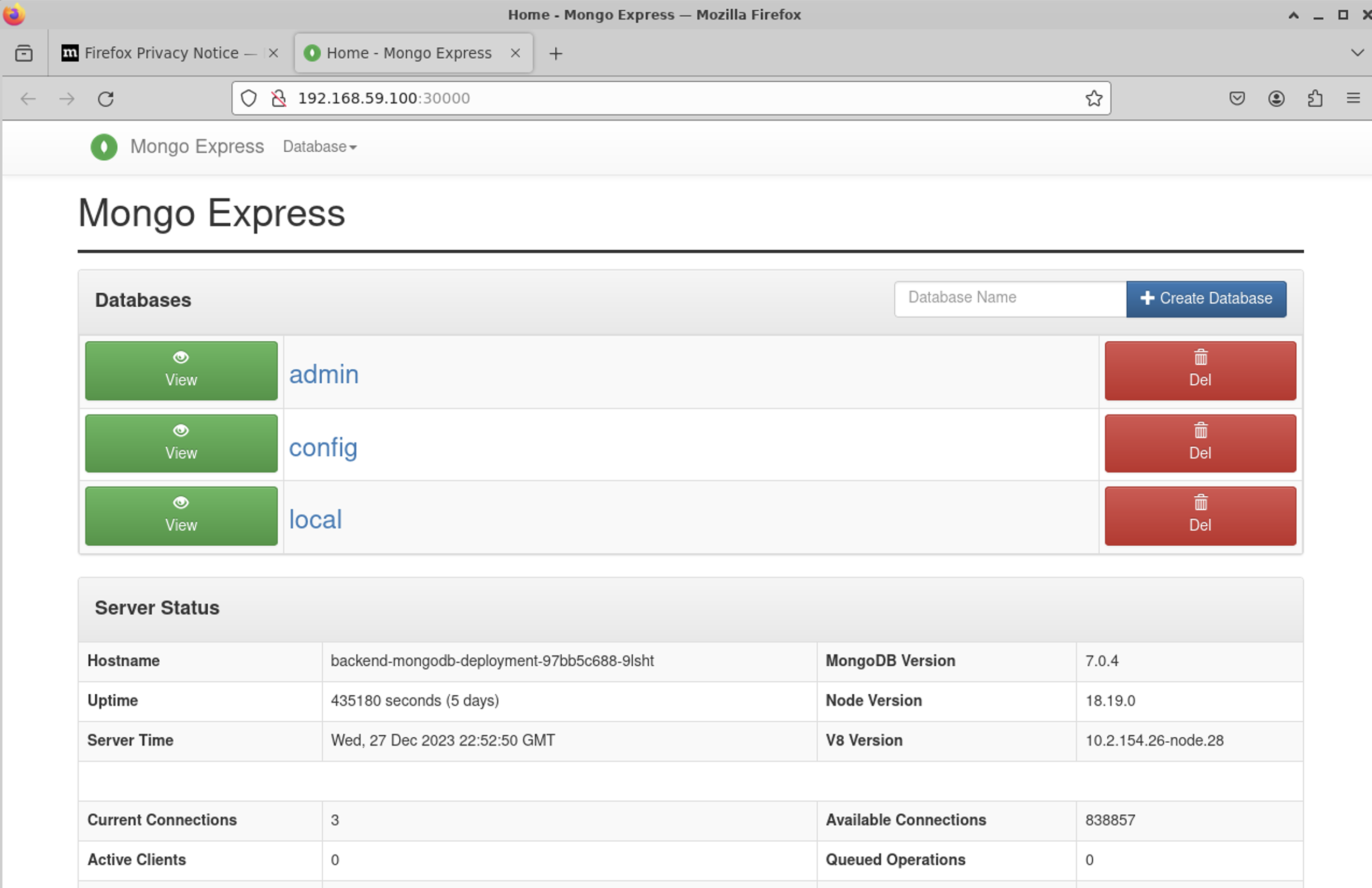Cyberdojo
K8s CC - Task 4: Create the Frontend
ConfigMap
A ConfigMap in Kubernetes is an object used to store configuration data in key-value pairs. It provides a way to decouple configuration artifacts from container images, allowing you to manage configurations separately from the application code.
ConfigMaps are commonly used to store non-sensitive, configuration-specific data, such as environment variables, command-line arguments, configuration files, or other settings required by applications running in Kubernetes pods.
We need to configure the mongodb-configmap to store the database_url: backend-mongodb value for reference in the Frontend. Full file is here:
apiVersion: v1
kind: ConfigMap
metadata:
name: mongodb-configmap
data:
database_url: backend-mongodb
Apply the ConfigMap
kubectl apply -f example1-mogoApp/mongodb-configmap.yaml
Frontend Deployment:
First, we need to set up the Kind as Deployment, the name and the same basic Replicas and Selector as before
apiVersion: apps/v1
kind: Deployment
metadata:
name: frontend-mongo-express-deployment
labels:
app: frontend-mongo-express
spec:
replicas: 1
selector:
matchLabels:
app: frontend-mongo-express
template:
metadata:
labels:
app: frontend-mongo-express
Then, we will set a container image that is preconfigured with MongoExpress: mongo-express. We will also set the default port. And we will configure ME_CONFIG_MONGODB_ADMINUSERNAME and ME_CONFIG_MONGODB_ADMINPASSWORD environment variables
spec:
containers:
- name: mongo-express
image: mongo-express
ports:
- containerPort: 8081
env:
- name: ME_CONFIG_MONGODB_ADMINUSERNAME
valueFrom:
secretKeyRef:
name: mongodb-secret
key: mongo-username
- name: ME_CONFIG_MONGODB_ADMINPASSWORD
valueFrom:
secretKeyRef:
name: mongodb-secret
key: mongo-password
The last thing we need to add in the deployment is setting up the Database server name. We will do that using the ConfigMap data we set earlier
- name: ME_CONFIG_MONGODB_SERVER
valueFrom:
configMapKeyRef:
name: mongodb-configmap
key: database_url
Frontend Service:
The service for the frontend deployment is slightly different than the service do the backend deployment. In the frontend Service we will need to expose it to the internet:
apiVersion: v1
kind: Service
metadata:
name: frontend-mongo-express
spec:
selector:
app: frontend-mongo-express
type: LoadBalancer
ports:
- protocol: TCP
port: 8081
targetPort: 8081
nodePort: 30000
Notice that we set the type to LoadBalancer, which will expose this service externally. And we had to add nodePort: 30000 which will set the port to be used externally.
Apply the Frontend
kubectl apply -f example1-mogoApp/frontend-mongo-express.yaml
Give it few minutes for all services to be created then move to the next step.
Expose the Frontend using Minikube
minikube service frontend-mongo-express
The above command will expose frontend-mongo-express service and give it a public IP address

You can access the frontend by pointing your browser to the IP address that was assigned. Notice that Mongo-express allows you to interact with the backend which is the MongoDB server (Service)

Use admin and pass to login to Mongo-Express.
Congratulations! Your Application is built!
Next
By: Ahmed Abugharbia
Date: 1-1-2024